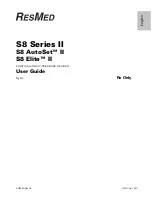
+1 (800) 732-2677
8
Operating Guide
Step 1: Have Your Utilities Marked
1. Call your utility company to have your utility lines marked. If you
have neighbors using an in-ground pet containment system, you
will want to ask them where the boundary is located. Trust us, you
really do not want to skip this step.
2. Make a plan for how you will work around any large metal
objects (like sheds) or wires. You can cross utility lines but only at
90° angles (
1A
).
Note:
Large metal objects and wires can amplify and/or modulate
radio signals in unpredictable ways.
Underground cables can carry high voltage. Have all underground cables marked before you dig to bury your wire. In
most areas, this is a free service. Avoid these cables when you dig.
Step 2: Charge the Receiver Collar
To charge the receiver collar, lift the rubber plug to allow access to the charge jack (
2A
). The
rubber plug needs to remain attached to the receiver collar. Plug one end of the charger into the
outlet and the other into the receiver collar. The jack and charger are keyed to fit one way. Do not
force it in backwards. The collar light is red while charging and green when fully charged. A built
in safety circuit prevents the receiver collar from overcharging. The first charge will take about 2 or 3
hours. Each charge can last up to 3 months depending on the frequency of use.
• The rechargeable Lithium Ion (Li-Ion) battery is not memory sensitive, does not require depletion
before charging, and cannot be over charged.
• The battery comes partially charged from the factory, but will require a full charge before first use.
• When storing the unit for long periods, remember to regularly give the battery a full charge. This should be done once every 3 to 4 months.
• This device contains a Lithium-Ion (Li-Ion) battery. Never incinerate, puncture, deform, short-circuit, or charge with an
inappropriate charger. Fire, explosion, property damage, or bodily harm may occur if this warning is not followed.
• The battery should be charged in areas with temperatures ranging from 32°F to 113°F / 0°C to 45°C. Recharging the
battery outside of this temperature range can cause the battery to overheat, explode or catch fire.
• You should expect hundreds of recharge cycles from your battery. However, do not charge your receiver collar every
night. Frequent charging can have a negative effect on the battery. We recommend that the receiver collar be used
until the receiver indicator light blinks red.
Step 3: Install the Surge Protector and Transmitter
Lightning strikes that occur even several miles away from your installation can create power surges or spikes which may damage an
unprotected system. The surge protector is included to safeguard your Rechargeable In-Ground Fence
™
system against surges or spikes that can
reach it via your AC power connection and/or boundary wire. Find a place to install the surge protector and transmitter. There are a few things
to consider when choosing an outlet for your surge protector and transmitter:
90°
10’
Buried Cable
Boundary Wire
10’
1A
2A









































